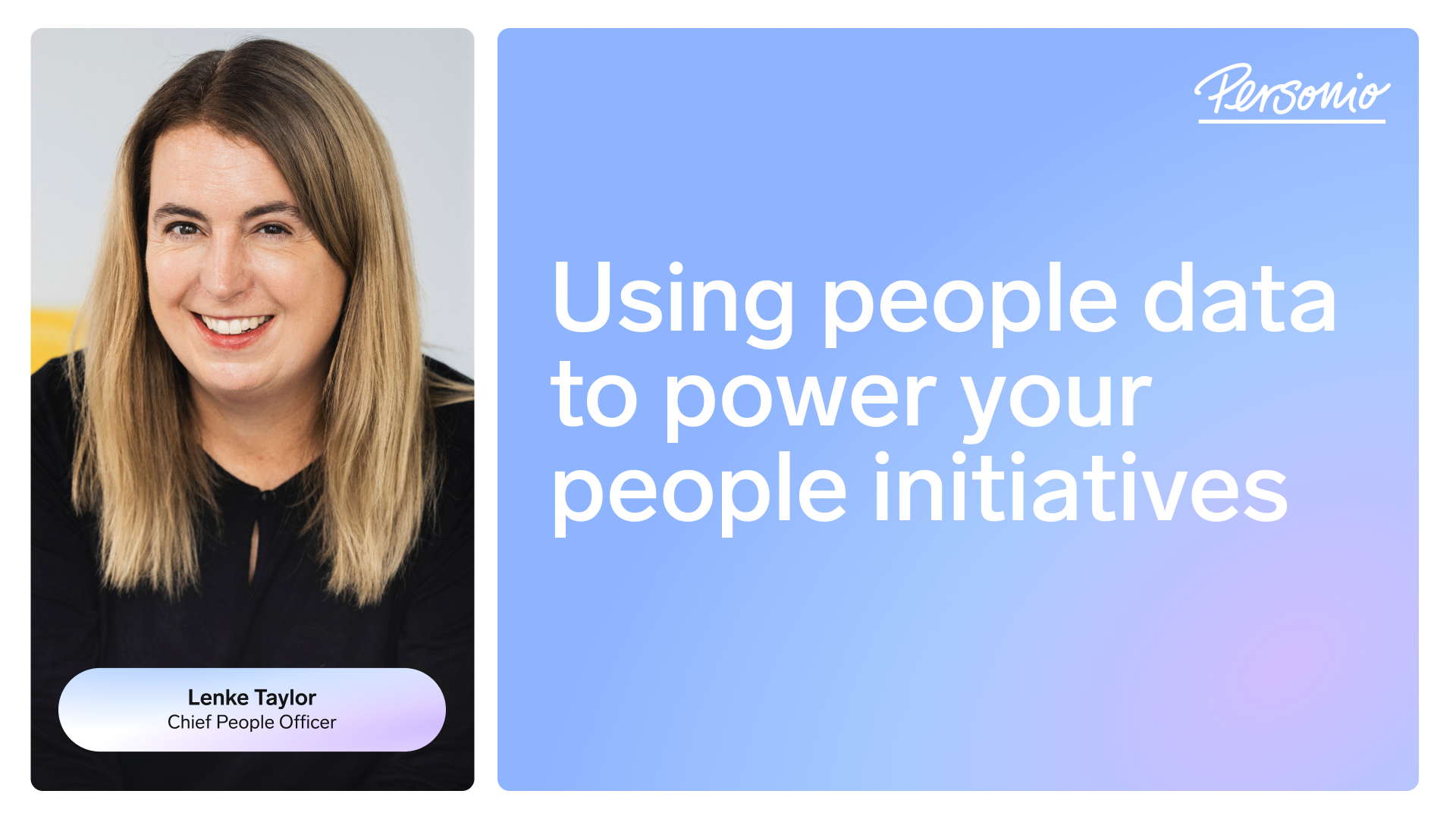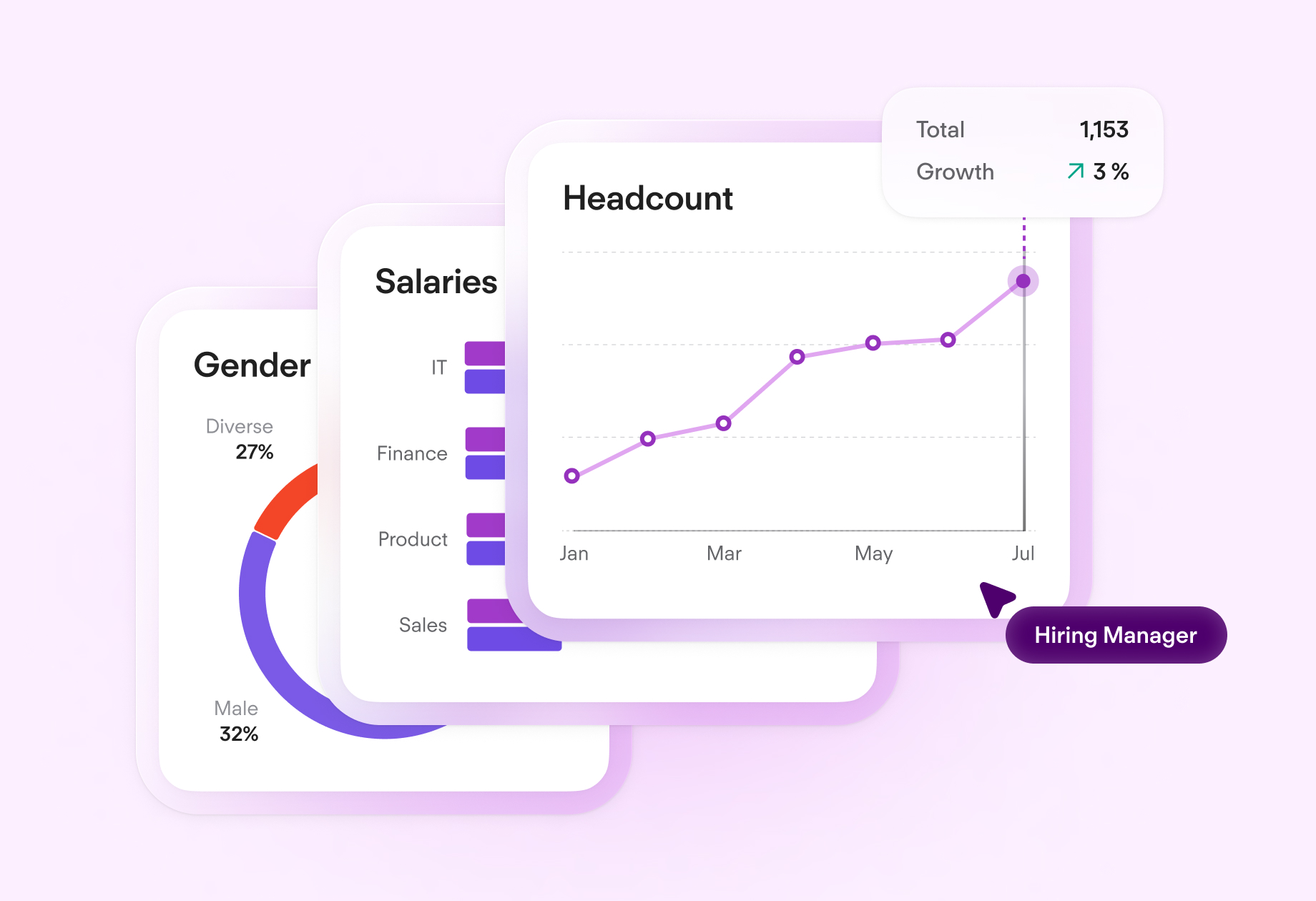
Discover how top HR teams leverage data to drive success and secure leadership buy-in and budget.
Data-driven HR work
Get your copy now20. August 2025
Using people data to power your people initiatives

How significant should data be in HR’s job description? As a Chief People Officer, I know the huge role HR plays in driving business success and helping organisations achieve their goals. One of the most effective ways I've seen teams accomplish this is through their data.
Even if data doesn't come naturally to everyone, there's definitely been a growing expectation for HR professionals to be data-driven. Our latest research at Personio reveals that 65% of HR professionals feel the need to enhance their data and analytics skills in the next five years.
Turning data enthusiasm into strategic action
It turns out that 43% of HR professionals chose their career path due to a passion for solving complex problems, and 89% enjoy working with data that helps them figure out those solutions. The challenge many face is transforming that enthusiasm into both confidence and action.
And even if you enjoy working with data, you’ve got to remember that you don't need to be a data expert to excel in HR. What matters is understanding what’s important to the business, identifying the most relevant data, and aligning specific HR initiatives with these priorities.
It’s important to know that data isn’t just about numbers. It’s also the insights and anecdotal proof of what’s happening across your organization on a day-to-day basis. When you bring these things together, you can really come to the strategic table with confidence.
That comes down to being able to speak the “language of the business.” HR professionals need to frame issues as business challenges rather than solely people issues to communicate effectively with executives. Storytelling makes data relatable and memorable, and helps gain buy-in from your leaders.
Crafting a balanced people analytics strategy
Now let’s talk about metrics. At this point, I think it’s really crucial to focus on timeframes. We need to have a strong balance between metrics that inform shorter, time-bound projects with those that require a longer timeframe and evolve across that period of time.
This really highlights the need to focus on particular data points (like immediate effectiveness) versus long-term trends and metrics (like engagement rate or eNPS).
For example, in the first quarter of the year, your HR team may face pressure to focus on hiring effectiveness for certain roles (let’s take sales roles as an example). This may require focusing on specific metrics, like time to hire or quality of hire, within a very tight timeframe.
Simultaneously, though, we still need to keep a closer eye on longer-term indicators like turnover or promotion rates for specific cohorts to ensure the health of the business. If our short-term metrics inspire targeted tactics, our long-term metrics should inspire entire programs.
You don’t need to be a data expert to be a people professional

Discover how to turn data into trustworthy, actionable insights that make a real difference to your team and your business. Check out our content hub with guides, resources, and more for you to explore.
Check it out nowUsing data to drive strategic conversations
When it comes to using HR data to get buy-in and budget for the projects you want to run, there are four things that I’ve found are often missing: access, cadence, proactivity, and storytelling.
Access: The first is having access to accurate data. We rely on data so much that we need to ensure that it’s easy to find, easy to work with, and accurate 100% of the time.
Cadence: Next, we need to think about cadence. Regular reporting cycles can help address both short and long-term business needs. It’s important here to track trends over time to connect the initiatives you’re trying to run with the results (both before and after).
Proactivity: This next one is especially important to me. One of the biggest recommendations I make is having data prepared for questions that haven’t been asked yet. HR is so often put in a reactive position, and data can play a key role in shifting that balance and becoming more proactive. Take promotion rates relative to attrition. If we can spot the rate of promotion slowing and attrition climbing in key demographics, we can forecast ahead the potential results of any particular performance cycle — and then make decisions to alleviate potential pains.
Storytelling: The final one is storytelling, and it’s something that is enabled by the three that came before it. When you have access, cadence, and proactivity, you can really begin to tell a story and explain how your initiatives feed into the things that the business is trying to solve.
Don’t forget: Your greatest advantage is the fact that you know your people. You can use these connections to tell a story through their experiences. This can help bring life to your data, while also gaining confidence from your high-level stakeholders.
Combining people data with HR expertise
One thing I don’t want you to forget: HR people know people, and they know the people who make up their organisation the best. While data and insights are helpful, they need to be supplemented by the judgement of our expertise. If you bring them together, it can be huge for your business.
And that’s the point. You don’t have to be a data expert to be a people professional, but having access to the right data – and knowing what to do with it – can help you better understand your business, the problems you’re trying to solve, and how to tell a story with data.
All of this positions HR as a strategic force that brings your business forward. No more feeling behind the curve — instead, having access to proactive insights that can lead to more proactive projects, that garner the support you need and the results you know you can deliver.


